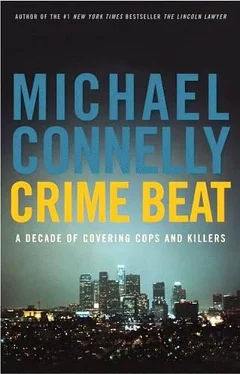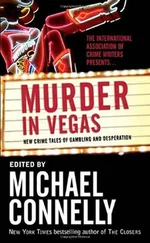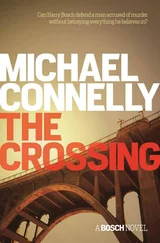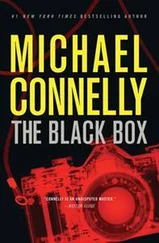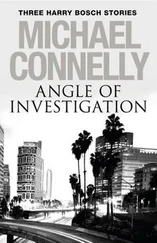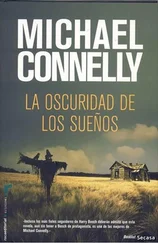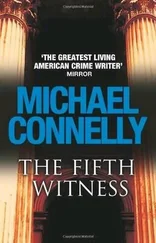Parks said the best hope for making an arrest may be a drawing of one of the teen-agers seen by the witnesses. “It’s all we’ve got,” he said.
Police have more to go on in investigating the two other deaths in the San Fernando Valley that at least were initially counted among the 60killings attributed to the riots.
Edward Traven, 15, was fatally shot in San Fernando about two hours before Willers. He was killed by a gunman who fired into the Cadillac he was sitting in with his brother and a friend at San Fernando Road and San Fernando Mission Boulevard.
The gunman had shouted “Where are you from?” – a gang challenge – and police said Edward had associated with gang members. Police say his slaying was an example of a gang shooting unrelated to the riots, though members of his family have insisted that the boy’s death would not have occurred if not for the atmosphere of violence spurred by the riots.
San Fernando detectives said they are attempting to identify a suspect from among the area’s numerous gang members.
The killing of Imad Sharaf, 31, is also unsolved. His body was found the morning of May 3when firefighters answered a report of a brush fire near the on-ramp to the San Diego Freeway at San Fernando Mission Boulevard. Police said Sharaf, who was a photo lab technician, had been doused with a flammable substance and set afire.
Although he, too, was listed as a riot victim, Los Angeles police believe otherwise. Investigators in that case are concentrating on Sharaf’s business and personal dealings while looking for a motive and suspect.
“It was some sort of dispute, we believe,” Detective Olivia Pixler said. “It seems that whoever killed him knew him.”
She said the fire may have been an attempt to disguise the killing as riot-related.
The Willers killing remains the Valley case from the riot period in which police have the most tenuous grasp on what happened. And part of the mystery that sticks in the minds of those who knew Willers or are investigating his death is the reason he decided to go back outside his motel room.
“We have no idea why he went back out,” Parks said. “He didn’t say why to anybody. The only thing we can think of is maybe he went back out to look at the wreckage” of the cars involved in the earlier chase.
Willers’ sister, Dianne Housden, suggests that her brother did not realize the danger he was in. Raised in a suburb of Portland, Ore., he lived most of his life in the Pacific Northwest and Utah, Nevada and Arizona.
“What was happening in Los Angeles was totally foreign to him,” said Housden, who lives in Everett, Wash. “I think he couldn’t believe what was happening and wanted maybe to go out. I think he must have thought, ‘Gee, this is weird’ and wanted to see. He was a free spirit. I don’t think he could have known the danger he was putting himself in.”
Willers’ foreman agreed.
“John was a friendly, open person,” the foreman said. “He comes from a place where you don’t have this kind of stuff, the riot or the drive-by shooting business. He would never have thought he might be in danger. But he was.”
Housden said she knew that her brother was in Los Angeles because a day before the riots began, he had called and said he was trying to locate his two teen-age children whom he had lost touch with but believed were living with his former wife in Southern California.
“He was going to try to find his kids but never got the chance,” Housden said.
In Willers’ suitcase, police found cards and money orders made out to the boy and girl. Housden said this week that she finally located the children, who live in Hemet, and will forward their father’s last gifts.
Like Willers’ fellow employees, Housden said her family has had a difficult time dealing with the death.
“We are not from an area that is violent,” she said. “We were not brought up in an area like that. It’s not right to have this happen to anybody, but there was no reason for this to happen to him.
“John’s crime was that he was at the wrong place at the wrong time.”
note: The murder of John Willers remains open and unsolved.
AFTERWORD: THE NOVELIST AS REPORTER
by Michael Carlson
Michael Connelly is a reporter. A good one. Not in the tabloid sense of someone who, like a pulp fiction writer, does whatever it takes to twist the elements of a story into a recognizable template that doesn’t stretch his audience’s emotions beyond the certainties in which tabloids deal. Nor is he an “investigative journalist,” the modern term applied to grad school rewriters of press releases when they score a celebrity interview. He’s a reporter in the best sense of the word, able to gather information and see the story buried beneath all those facts, able to sort through the impressions of all sorts of people and see how they affect those facts and, most of all, able to put it all down on paper so his reader can do the same thing.
When I began my career, I had to study the UPI style book. All the things it said about structuring a story – the famous who-what-when-where-why and how – are laid out in Connelly’s stories, clearly and cleanly. He organizes his stories like a reporter should, to make sure the reader sees what he has seen. This is much more than doing a Jack Webb “just the facts, ma’am.” That ability to set a story out clearly serves Connelly’s greatest strengths as a reporter: his perception and his empathy.
By perception I mean the ability to see and to hear, or, better, to listen to what is being said and to see what it means. This involves the greatest skill a good reporter can have, the ability to understand people. You can’t see a good story unless you can see where it is coming from. Too often in our world, journalists move from graduate schools into hermetically sealed newsrooms, protected by security passes and cut off from the real lives of the people about whom they are supposed to report. They’ve grown up in a world where the relationships are clearly delineated, the conflicts take place along a very narrow perimeter and the people they write about exist only as fodder for copy.
This is not the world cops inhabit. Not the ones who are out on the streets.
Cops know that tragedy arises from the contrast of expectations with reality. They know the real lives of the victims they find, and the real effects of the deeds perpetrated by the criminals they pursue. They can’t escape that knowledge, can’t put a story to bed and then go home and sleep soundly.
The most important story in this collection, as it relates to Connelly’s fiction, is “The Call,” in which he spent a week on call with the Fort Lauderdale homicide squad. Connelly says that what he saw informed everything he has written in fiction, and if you read the story carefully you will see how true that is. It is not just the details of crime and investigation, but the way that Connelly the reporter absorbs the mind-set of the cops, internalizes it. Their fatigue becomes palpable. When Connelly sets out the facts about how hard it will be to solve the case, you feel the emotions of the investigators, the frustrations that are part of their everyday life. This, to me, is the starting point for everything we know about Harry Bosch, and the sense of tiredness which pervades the Bosch novels so effectively.
Empathy is not identification; there is a crucial difference. Connelly tells us that, like Bosch, he collected the shell casings from police funerals and kept them in a jar. He rode with cops and examined crime scenes and corpses with them, but he is not a cop. He is a reporter, and he manages to keep a reporter’s distance from his subjects, which allows him to see the bigger picture of the world that they inhabit.
Читать дальше
